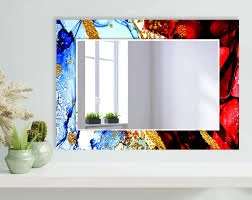

The Fascinating World of Tempered Glass
Tempered glass, often referred to as toughened glass, plays a crucial role in modern architecture and design, enhancing both safety and aesthetics. This unique type of glass undergoes a rigorous manufacturing process that is designed to increase its strength and durability, making it an essential material in various applications, from building facades to shower doors. In this article, we will explore the process of making tempered glass, its advantages, and its numerous uses.
The fabrication of tempered glass begins with standard glass, which is cut to the desired size and shape. The crucial step comes next the glass is heated to temperatures exceeding 600 degrees Celsius (about 1,112 degrees Fahrenheit) in a furnace. This intense heat alters the structure of the glass, allowing the molecules within to move freely. Once heated adequately, the glass is rapidly cooled using blasts of cold air. This process, known as quenching, ensures that the outer surface of the glass cools and hardens faster than the inner layers, creating a state of compressive stress on the surface and tensile stress in the interior.
The Fascinating World of Tempered Glass
Another significant advantage of tempered glass is its safety features. In the unfortunate event of breakage, tempered glass crumbles into small, blunt pieces rather than sharp shards, minimizing the risk of injury. This safety aspect makes it a preferred choice in homes and commercial settings, especially in areas like shower enclosures and glass partitions.

In addition to safety and strength, tempered glass offers aesthetic appeal. Its crystal-clear transparency allows for unobstructed views and natural light transmission, enhancing the ambiance of any space. Architects and designers frequently incorporate tempered glass into their designs, enabling innovative structures that blend elegance with functionality.
Tempered glass is also an environmentally friendly option. It can be fully recycled, contributing to sustainable building practices. As the world increasingly moves toward eco-consciousness, the demand for recycled and energy-efficient materials in construction is growing. Tempered glass fits perfectly into this trend, as it can be repurposed without losing its quality.
While tempered glass is known for its many benefits, it's essential to consider that its production requires specialized equipment and expertise. Therefore, it tends to be more expensive than regular glass. However, the long-term advantages in terms of durability, safety, and maintenance often outweigh initial costs, making it a wise investment for builders and homeowners alike.
In conclusion, tempered glass stands out as a remarkable material that combines strength, safety, and aesthetic appeal. Whether used in residential projects or commercial constructs, its unique properties make it a preferred choice for modern design and architecture. As technology continues to advance, we can only expect further innovations in the use of tempered glass, solidifying its position in the future of sustainable and beautiful design.